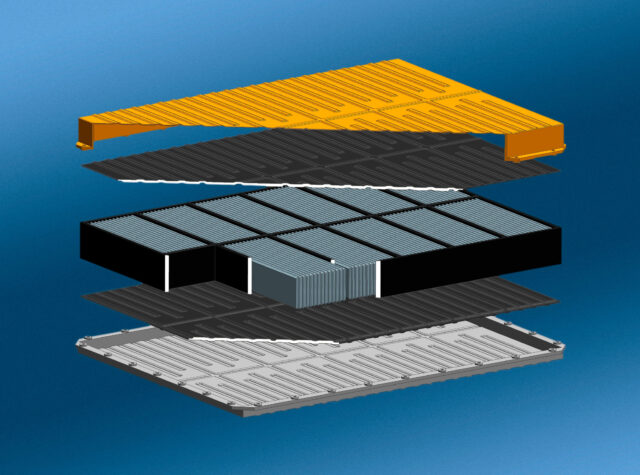Electromobility is an important attribute of a modern urban environment. More and more people prefer a hybrid or electric vehicle for its environmental friendliness and efficiency. Among other reasons the constant-improving technology and the fact, that ever-greater ranges can be achieved are crucial. This is related to the optimization of capacity of the energy storage devices used in vehicles (batteries). These range increases are challenging not only for the cell packages, but also for the entire peripheral equipment of the vehicle.
It’s possible, that hybrid and electric vehicles have a higher fire risk because of the complexity of the batteries and electronics than conventional vehicles with an internal combustion engine. The event of damage, such as an accident or, in rare cases, a defect in the on-board electronics, which can lead to a fire or “thermal runaway”, is often the fire reason. The expression “thermal runaway” is colloquially used for the thermal runaway of lithium-ion batteries, which are mostly used in hybrid and electric vehicles.
Due to damage or overheating of a cell, caused by thermal runaway, a short-circuit current can occur; and this leads to an exothermic reaction. Given the high energy density, a large amount of energy can be released very quickly. This condition leads within the battery to an uncontrolled chain reaction from cell to cell, which is accelerated by sharply rising temperatures; and a battery fire occurs. This can have severe consequences; and that’s why the standards and the laws worldwide regulate safety and fire protection in hybrid and electric vehicles. In the European Union, for example, Regulation (EU) No. 100 UN-ECE-R100 defines the specific requirements for the safety, fire protection and battery management of electrified vehicles. Safety remains the ultimate priority, and this kind of regulations are necessary. However, they only cover a minimal requirement for a critical condition such as the thermal runaway; therefore, continuous further development and optimization of the protection systems are essential. That’s definite that the Regulations will become even more stringent starting 2026.

ISOLITE, having many decades of experience in the field of high-temperature insulation, has taken up the challenge and began to develop its’ product portfolio with ambitious goal of “No thermal runaway”. Our engineers have succeeded in developing special fire protection components, that have a high dielectric strength and a melting point of > 1,600°C and at the same time are characterized by a high permeability. The Thermoforming process applied at ISOLITE also makes complex component geometry and cross-sectional changes of the insulation components feasible. This offers all the possibilities to use the insulation performance exactly where it is urgently needed, in order to continue promoting future mobility with the greatest possible safety both for people and environment.
If you have any questions or comments, Mr. Manuel Kuehn, Head of Engineering at ISOLITE (info@isolite.de) remains at your disposal.
With great tension we are looking into the electrifying future – Be a step ahead with ISOLITE!




